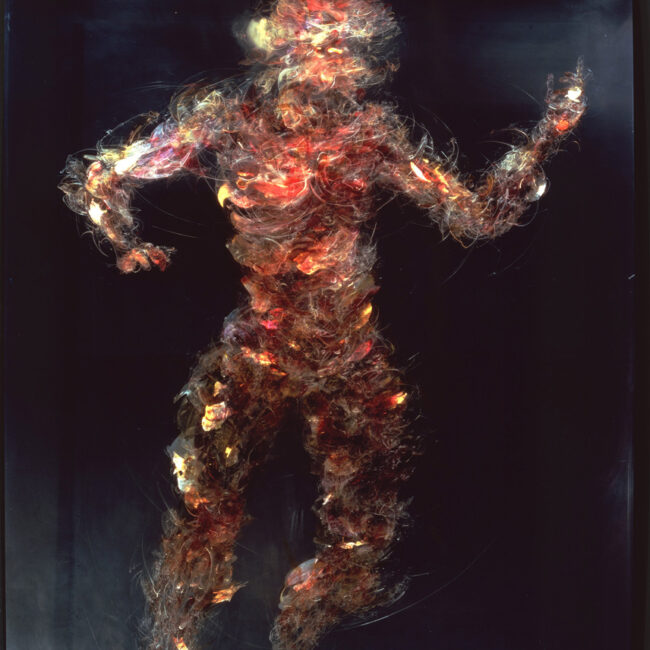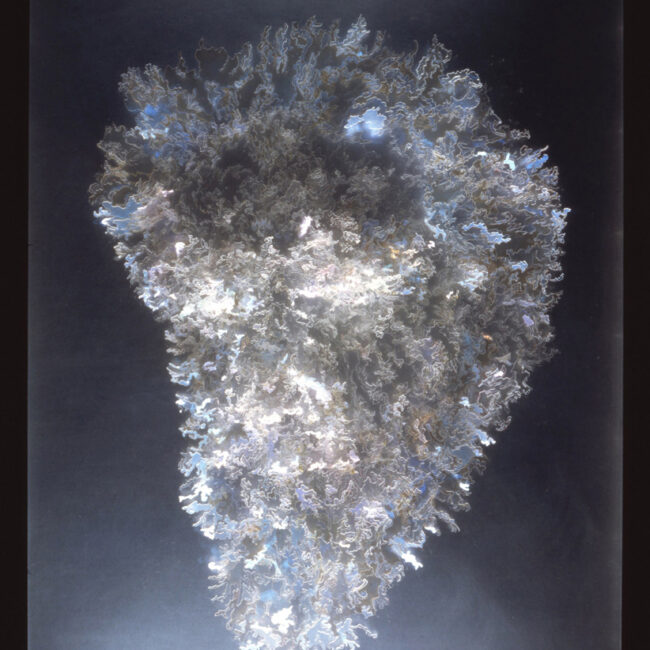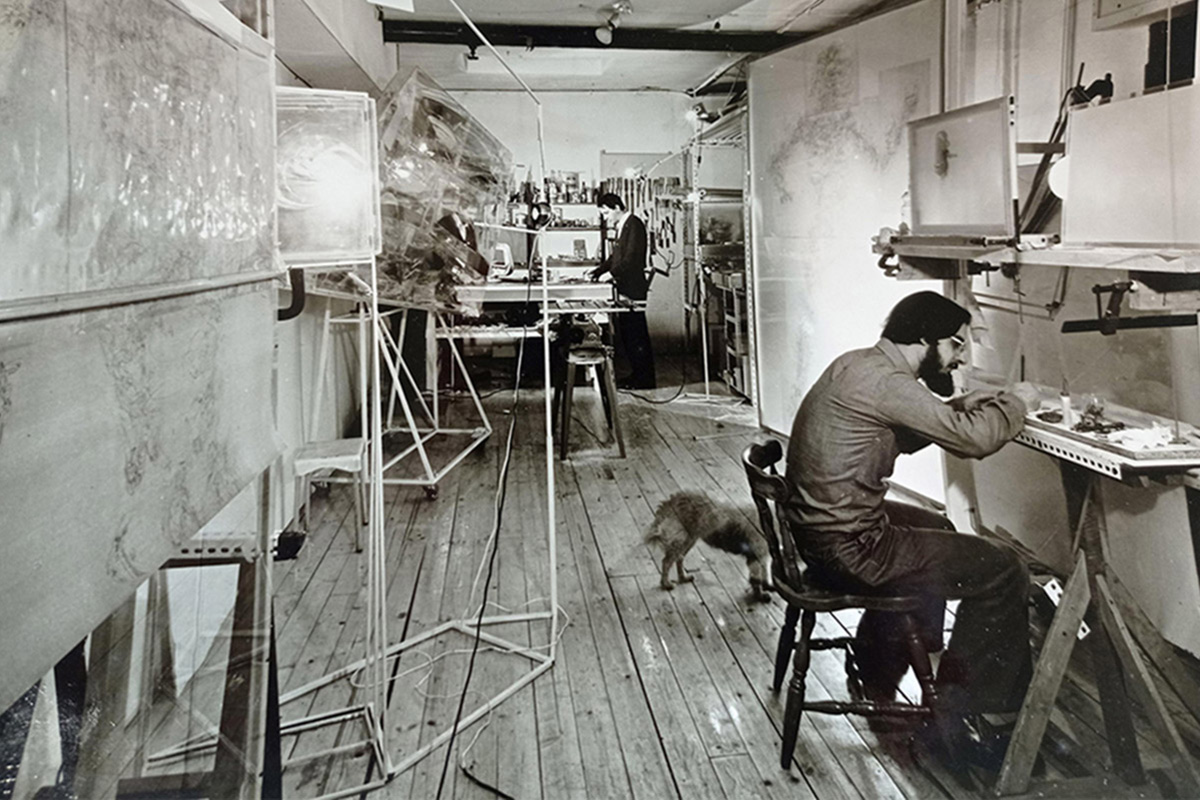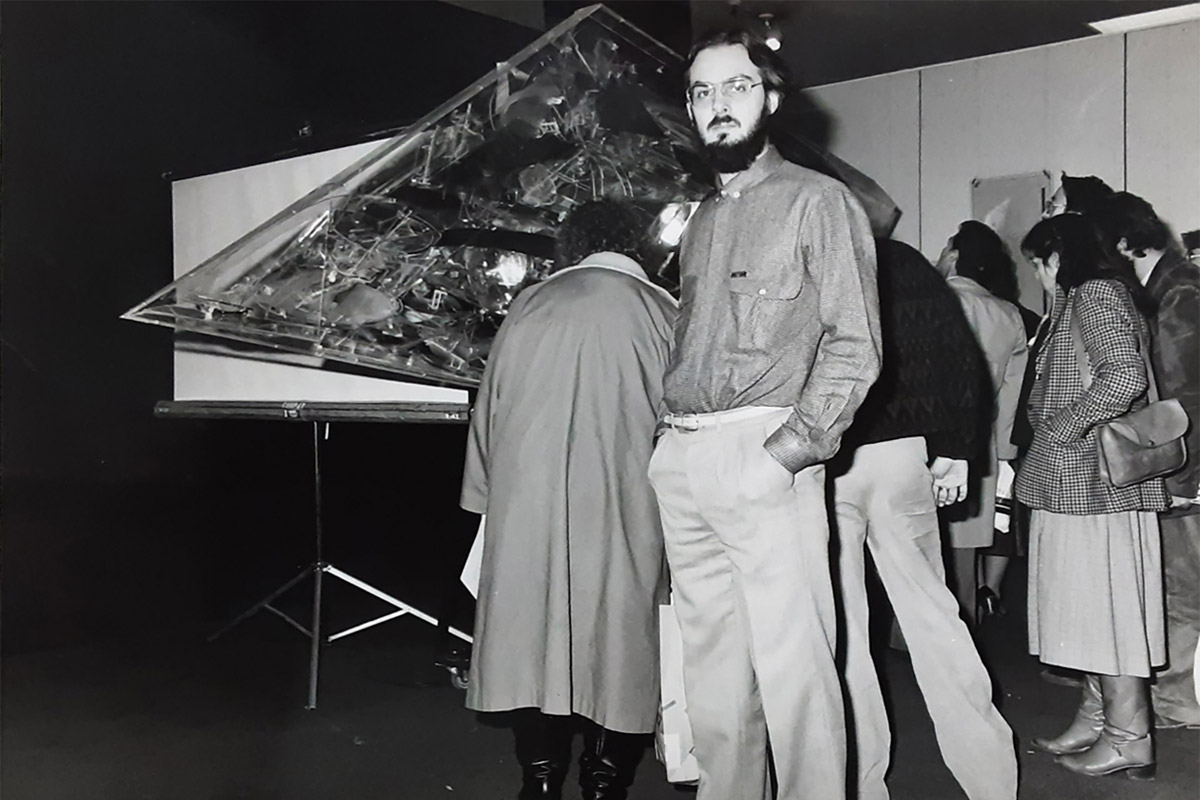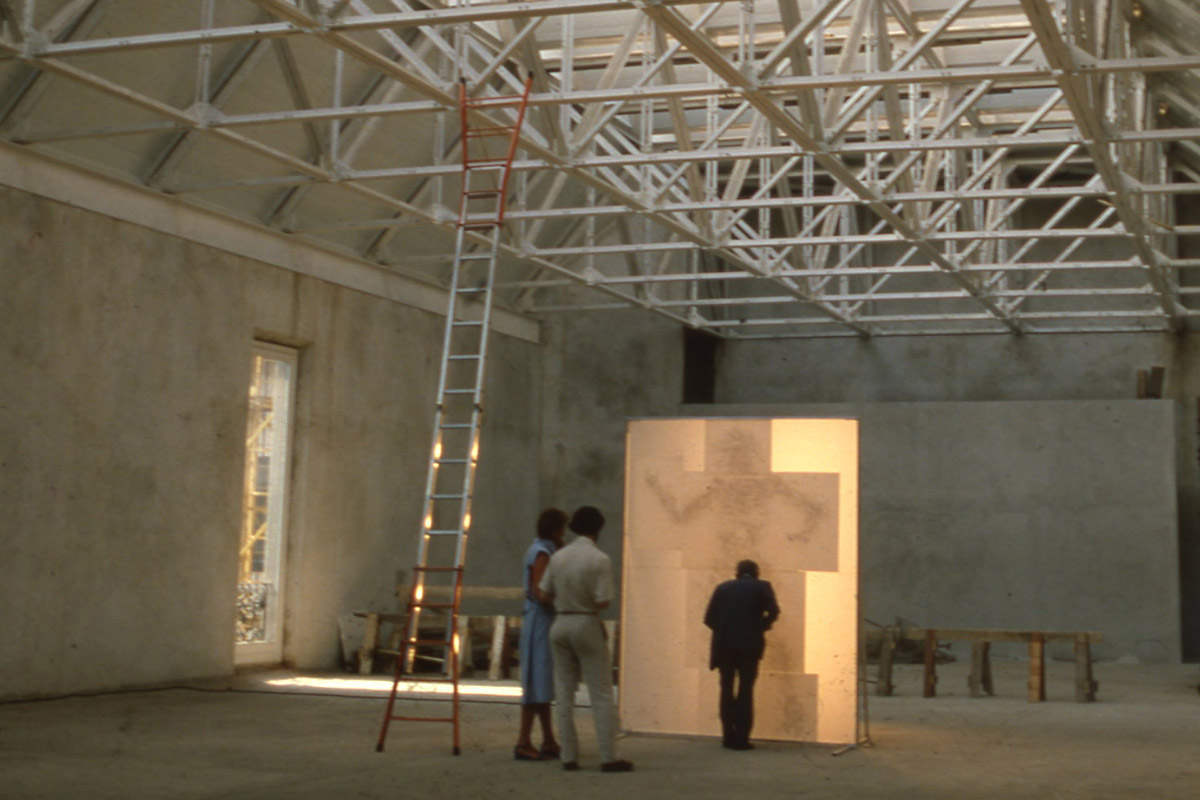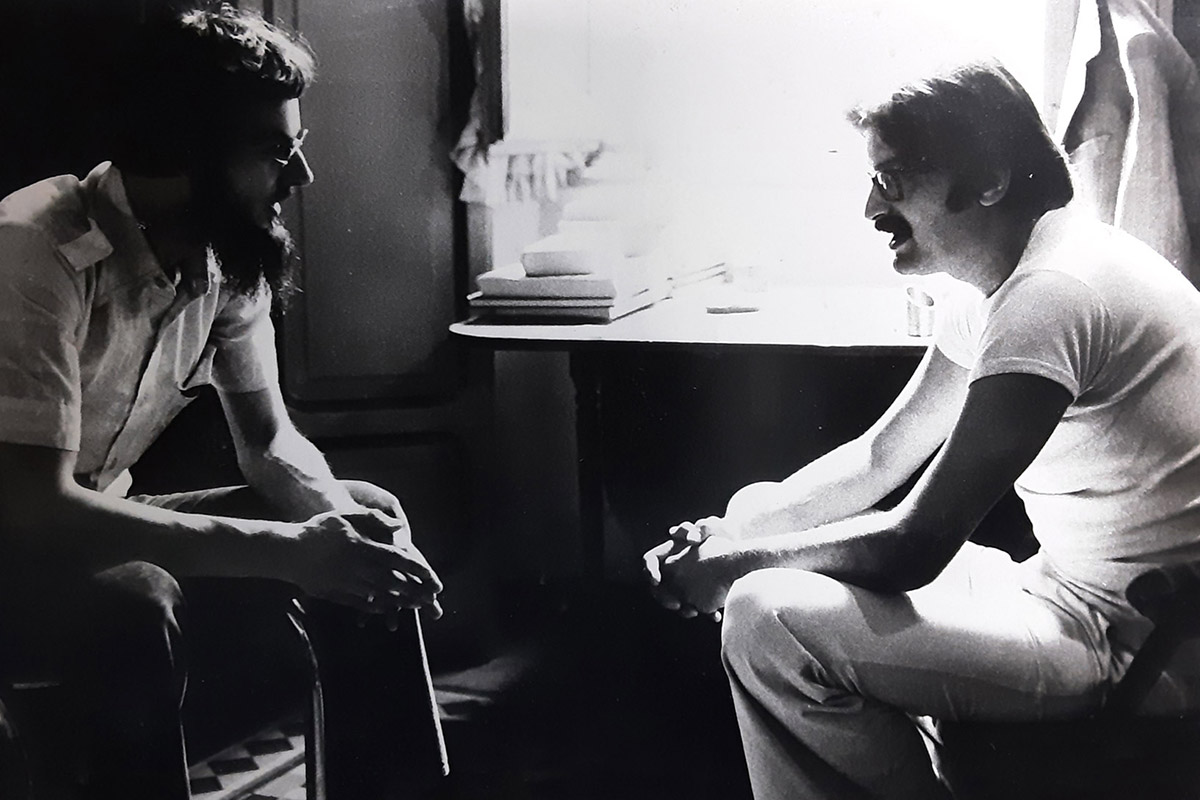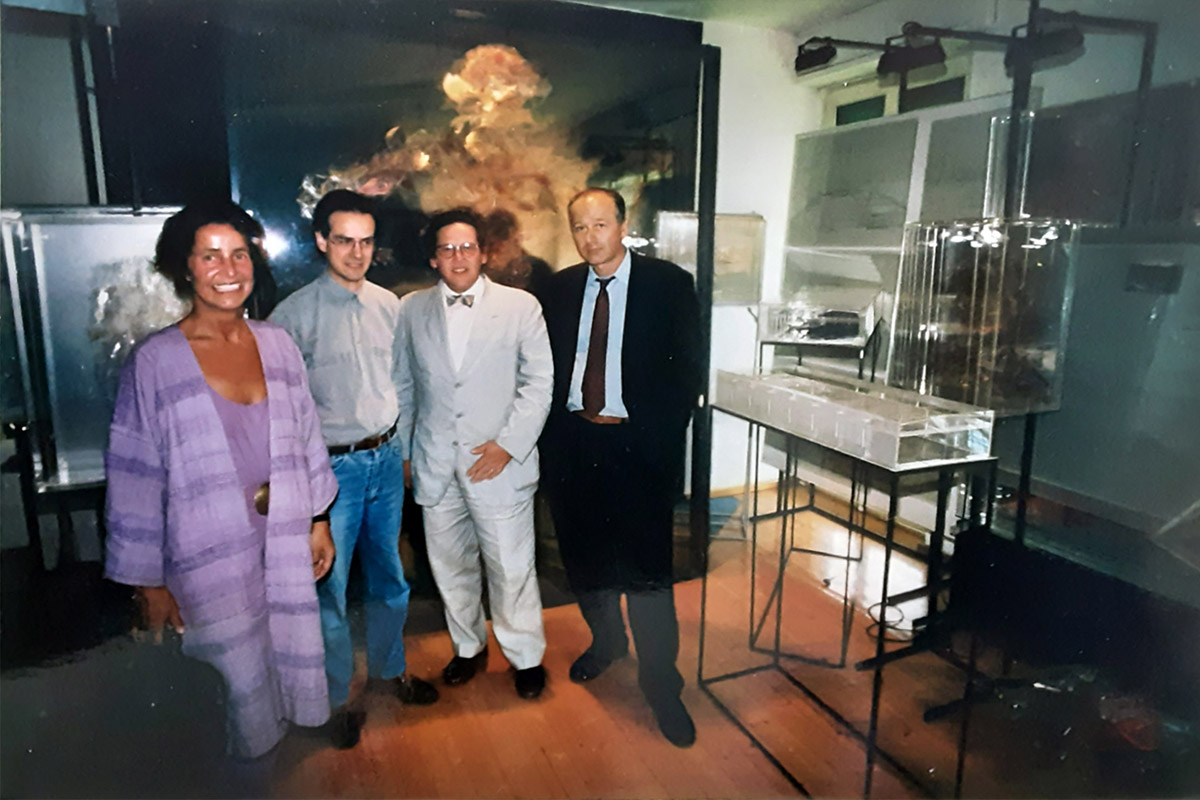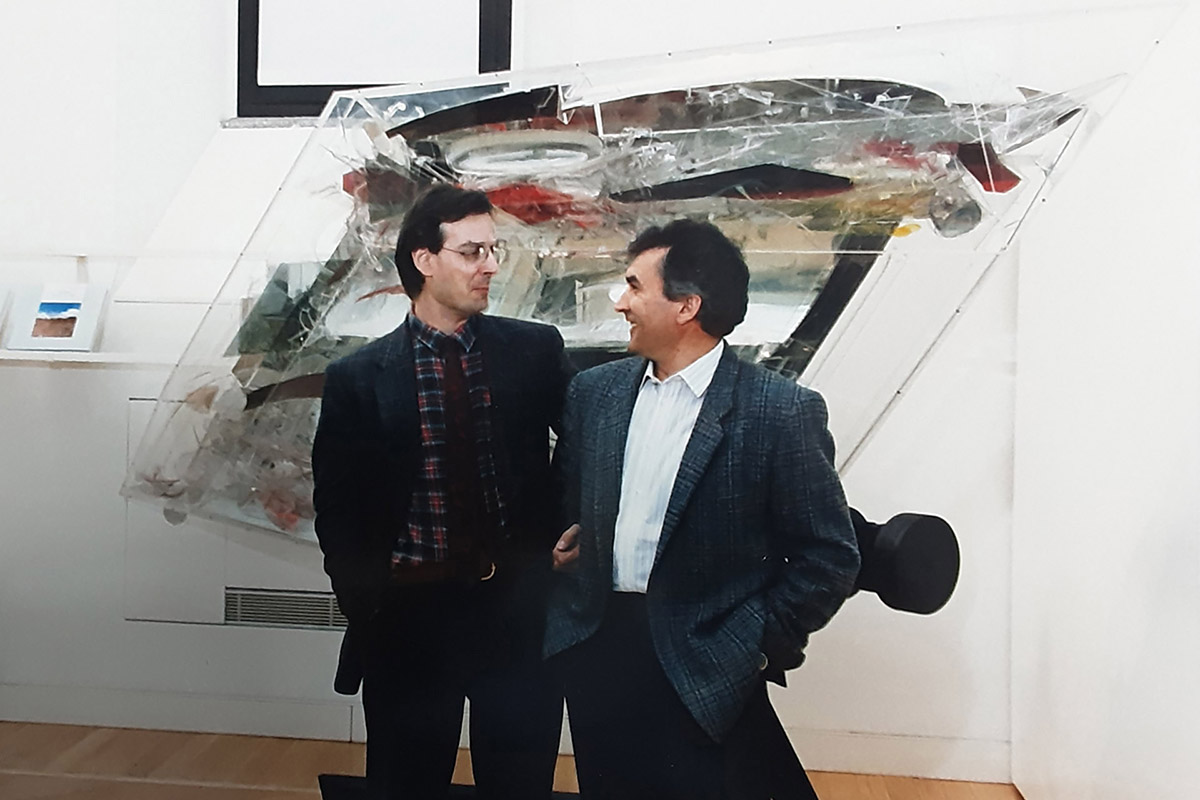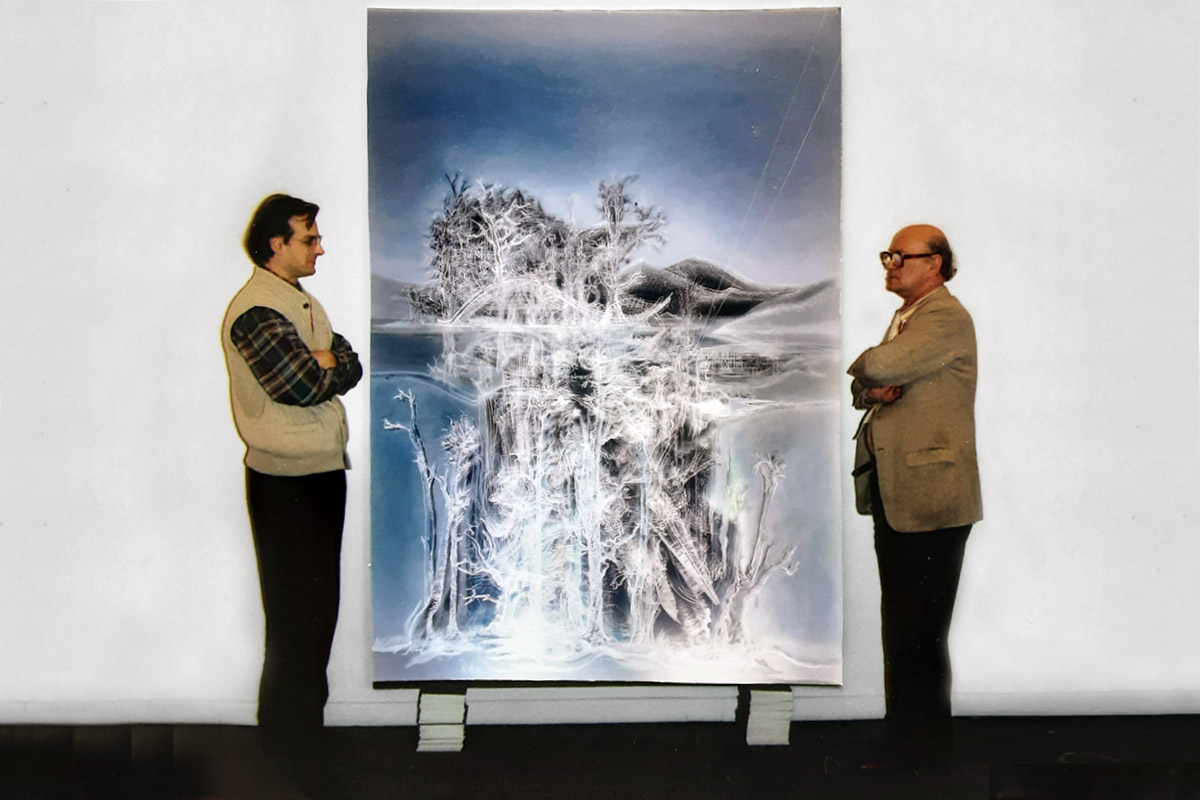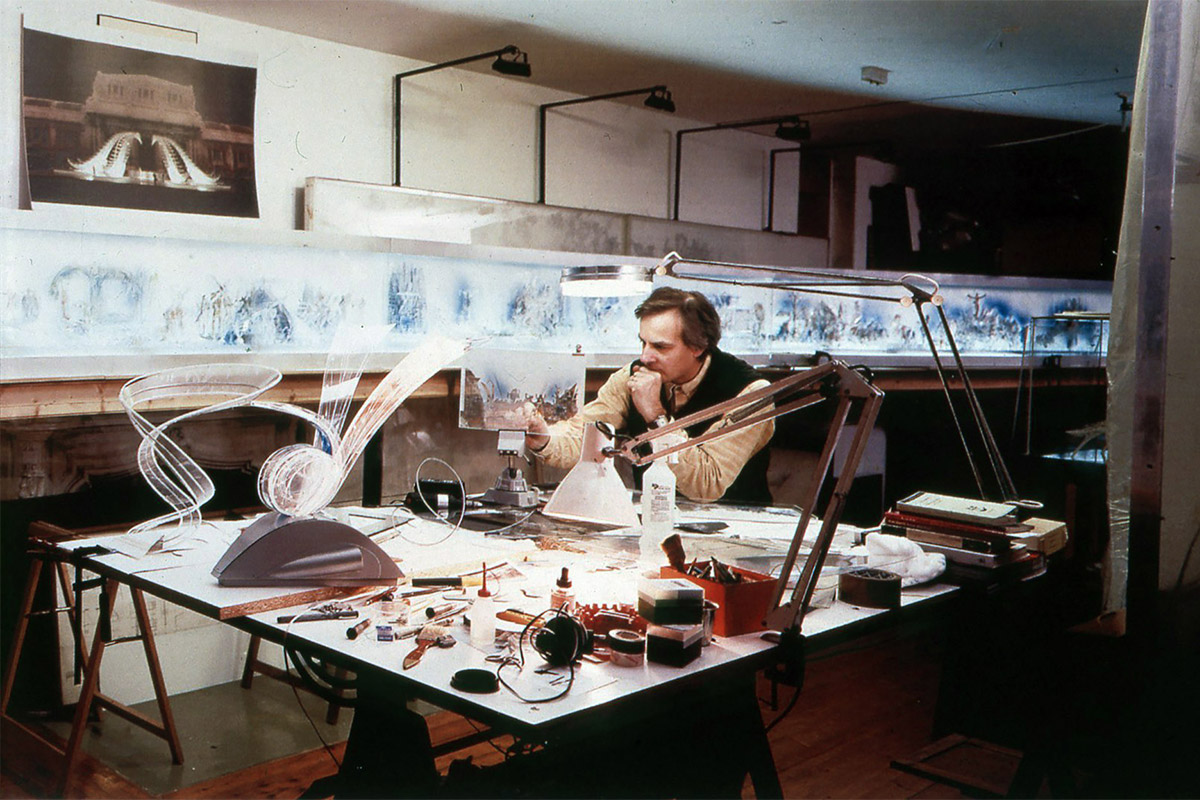Filippo Avalle, a portrait
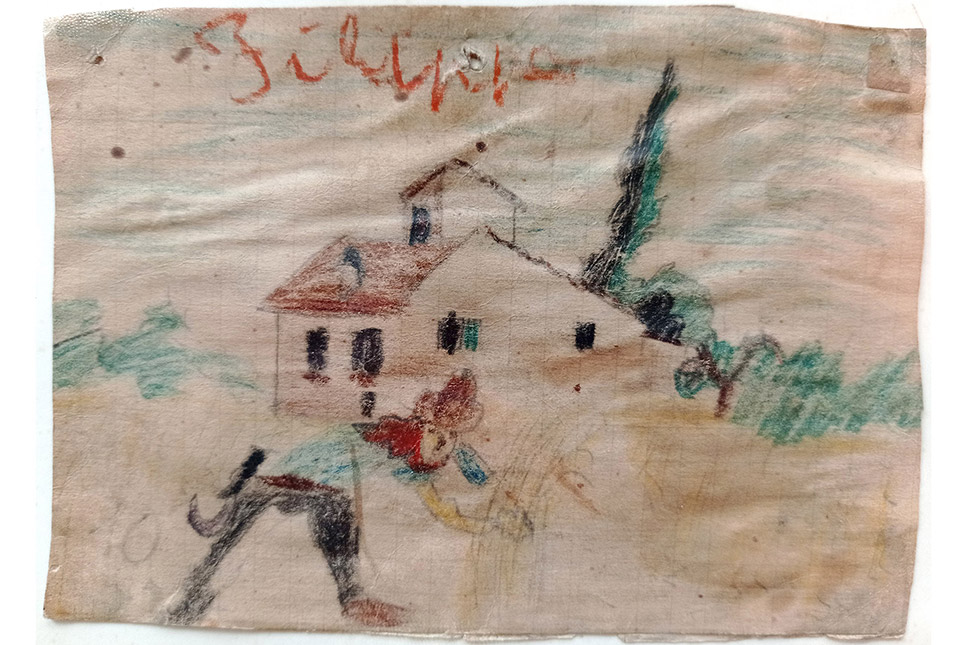
1954 – Rural scene near Varese in the manner of Van Gogh.
Where the story begins
Filippo Avalle was born to a Swiss mother and Italian father in Chêne-Bougeries (Geneva) on October 13, 1947.
Just one year after the publication of Manifiesto Blanco conceived by Lucio Fontana, an ideal teacher and point of reference for Avalle, who will consider this his artistic inheritance to develop.
And he will do so by welcoming into the legendary “slash on canvas” the indication for an ulterior dimension in space. He will thus concretely undertake his artistic path ‘beyond Fontana’ through the use of methacrylate (plexiglas), a plastic material with transparent and opaque characteristics, that hides and reveals a space beyond the canvas.
Fascinated by the complexity of Leonardo’s works of art, he will never undermine the value of preparatory drawings that over the years will become “stratigraphic”.
Beginnings
From traditional to the avant-garde, the discovery of plexiglas
As a child, Avalle tries his hand at copying famous paintings and receives private drawing lessons.
After a period spent between Varese and Milan, his family moves to Turin for his father’s appointment as Professor of Romance Philology at the University, while Avalle registers to attend the arts high school. In his atelier, set up in an uninhabited house, he completes his first oil paintings with intimist figures that stand out in metaphysical backgrounds. It is however with his multi-material paintings ‘quadri-forma’ (shape-paintings) that he attempts to go beyond two-dimensionality and the frame.
He travels on his moto Guzzi and with a tent to discover Italy’s artistic treasures. He goes to England to study the language and, once there, paints and begins to sell his work.
Decisive is the year 1966 for the consolidation of his professional career together with his trip to Holland to meet up with Helma Maessen, his future wife, whom he met in England.
Together they visit museums in Germany, France and the Netherlands where the artist keeps abreast of the latest developments and deepens his knowledge of Dutch painting and the Flemish primitives.
In the late 60’s, enrolled in the Accademia Albertina in Turin, he further explores the “quadri-forma” (shape-paintings) in his atelier housed in the typical courtyard apartment buildings in Piazza Gran Madre, and then moves on to the “vetrine” (glass panes), multi-material representations with fabric, aluminum foil, metal sheets, glasspaper, wood and plastics. The “terre” (lands) period follows: natural landscapes with sand, dirt, wood and hay.
After getting married, the couple moves to the house-atelier in Lungo Po Cadorna where Avalle organizes solo and collective exhibitions. In 1970, a period of work at the Centro Polimero Arte in Castiglione Olona marks a turning point: Avalle experiments using methacrylate (plexiglas), which will become his material of choice for all his works.
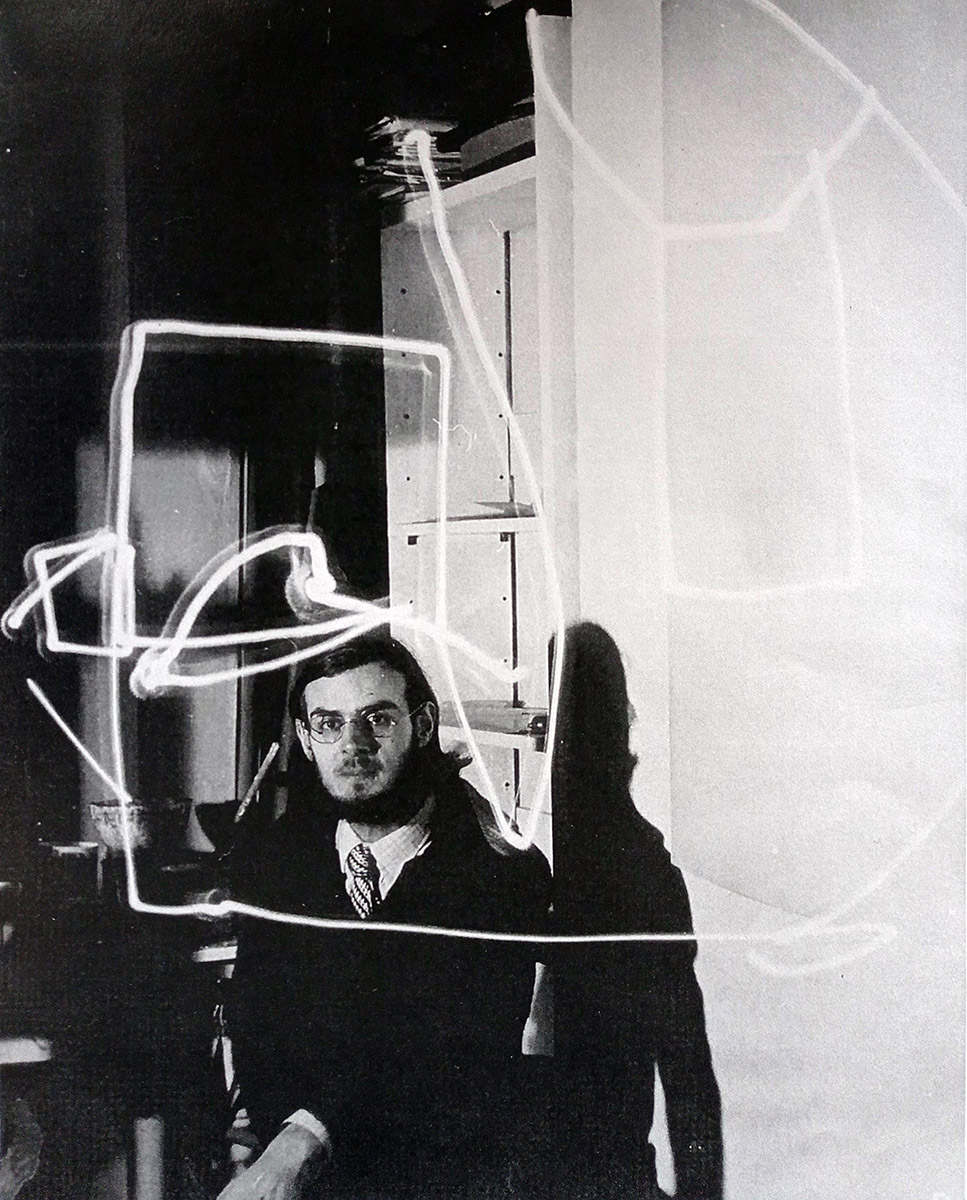
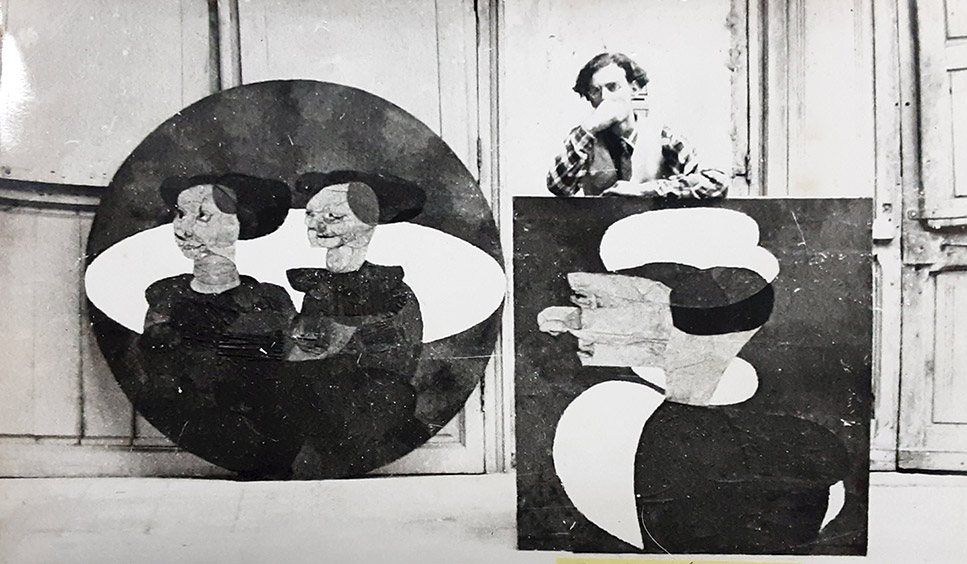
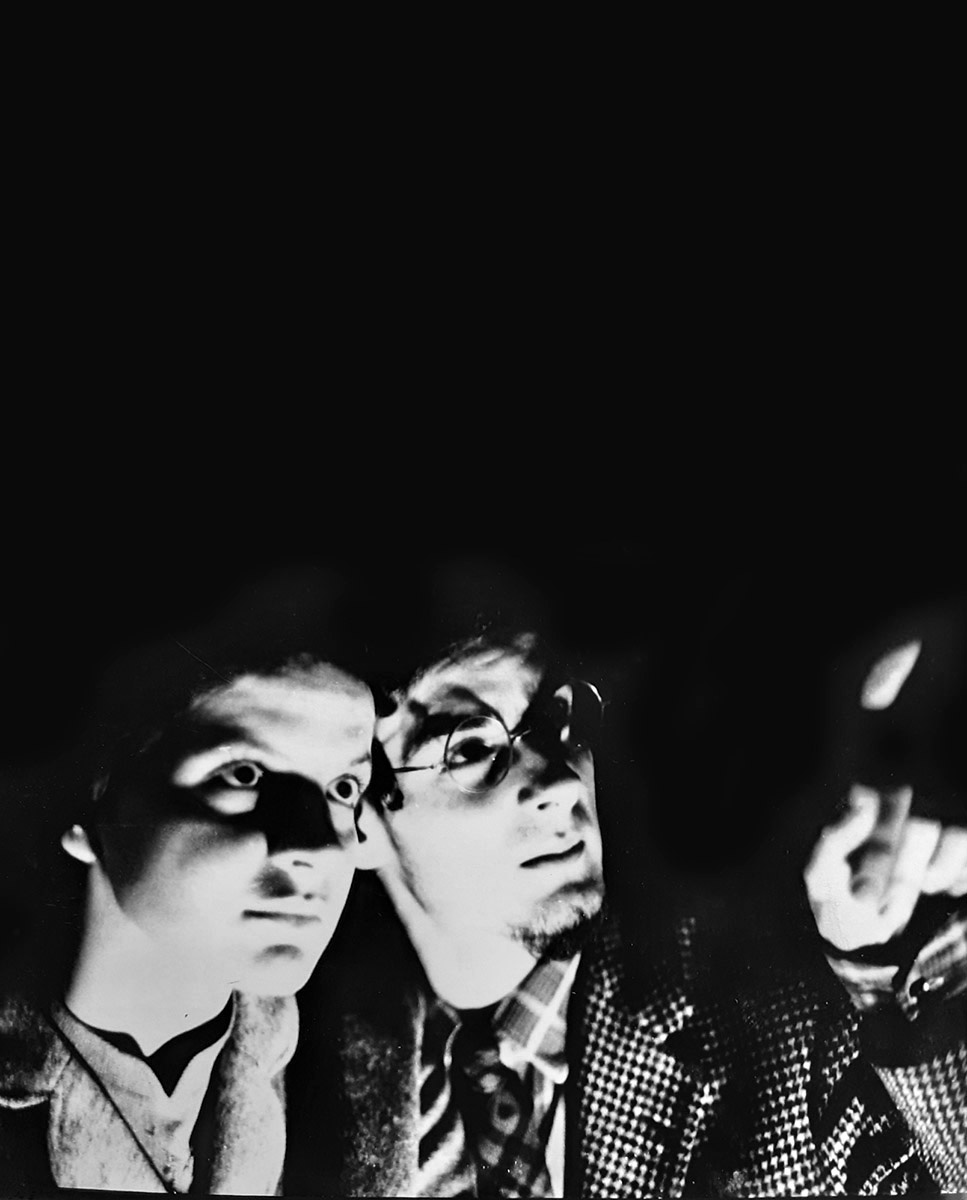
Towards the future…
A manifesto and the first great artwork
After completing a part of his military service in Milan, Avalle moves with his wife and young daughter Saskia to Lombardy’s capital city, in Via Stendhal 65, an apartment where he also works, before opening his atelier.
He comes into contact with the Milanese cultural milieu and meets Guido Le Noci, owner of the Apollinaire Gallery. Le Noci sees the exhibition at the Rizzoli Cultural center curated by Vittoria Piazzoni Marinetti, becomes interested in the “Manifesto per una ripresa rivoluzionaria dell’arte” (Manifesto for a revolutionary revival of art), signed by Avalle and philosopher Giovanni Bottiroli, and decides to “provide a passport” – an expression he coins – to an artist whom he believes in. And so, after funding Avalle’s first great artwork Opera Labirinto (Labyrinth Artwork), he goes on to finance a second work entitled Helma Opera – Labirinto, (Helma – Labyrinth Artwork), created in Via Liutprando, in addition to the publication of a book with the same name, written in collaboration with Bottiroli. Upon the work’s completion (1975), it is exhibited in the Apollinaire Gallery for an entire year.
How the Beaubourg goes to Germany...
…And an Opus Epicum at Palazzo Citterio
For his third great artwork, Labirinto senza filo d’Arianna, (Labyrinth without Ariadne’s thread), acquired by B&B in Novedrate, in the province of Como, Avalle finds a precious collaborator in the artist Maurizio Aprea. The “bottega” is established and it will be active for seven years, first in Via Liutprando and later in Via Roncaglia 25, near the workshop of Bruno Maiocchi, who will introduce Avalle to interferential filters and coloring on methacrylate.
The Philippe Daverio Gallery, directed with passion by Philippe Daverio and Paolo Baldacci, inaugurates Filippo Avalle’s first solo exhibition in 1976. But that’s not all. The gallerists decide to finance the artist: a heart-felt collaboration begins and the profound bond that is created will never be broken. During this period, Avalle’s network of connections expands giving way to his first exhibitions abroad.
In 1978/79 the fourth artwork Incendio a Beaubourg (Fire at Beaubourg) financed by Sergio Consonni, furniture-maker with a passion for art, is shown for a year and a half at the Wilhelm Lehmbruck Museum in Duisburg (Germany), thanks to the initiative of the director of the time Siegfrid Salzmann. The piece, dedicated to the renowned Parisian museum – the Centre Pompidou – undergoes a very particular story, which can be read in the section On exhibit.
In the meantime, Avalle begins his self-taught studies of architecture and building science that give fruit to his fifth artwork, La Feroce (The Ferocious), the name coined by Fiat factory workers to refer to their company. Carlo Bertelli, who was the Superintendent of the Brera Art Gallery at the time, proposes to display the piece at Palazzo Citterio, which was still under construction. In 1981, the artist achieves one of his most unique and theatrical “solos”. In one of the rooms, there is also the preparatory drawing for Atlanta Opus Epicum, a “psychosomatic” human figure and the sixth great artwork (later realized in plexiglas), for which Avalle studies anatomy handbooks together with texts of psychoanalysis: the drawings and three-dimensional works inspired by the organs of the human body are all exhibited at Palazzo Citterio.
Overseas, and then on the Lake
In 1981 Avalle travels to Canada and New York on invitation of the Montreal Eaton Centre that rents La Feroce (The Ferocious) for an exhibition during the event “Promozione Italia” (Promote Italy).
Upon his return, renovation works begin at his house-atelier in Brienno, on Lake Como, where the family moves to in 1983. A few years later, their son Jacopo Zeno is born.
The publication of the book Opere 1974-1986 (Artworks 1974-1986) marks the end of the period of financial support by the Daverio Gallery, which will go on to endorse an extensive solo exhibition of the artist the following year.
Avalle’s contacts with Milan endure, as does his work on exhibit abroad. He sets about to prepare a new phase, without abandoning the concept of the “great artwork” and the pull towards that which Avalle calls “Opera Unica” (All One Artwork), an ongoing research of a renewed integration of all resources inherent to painting, sculpture, architecture and new technologies.
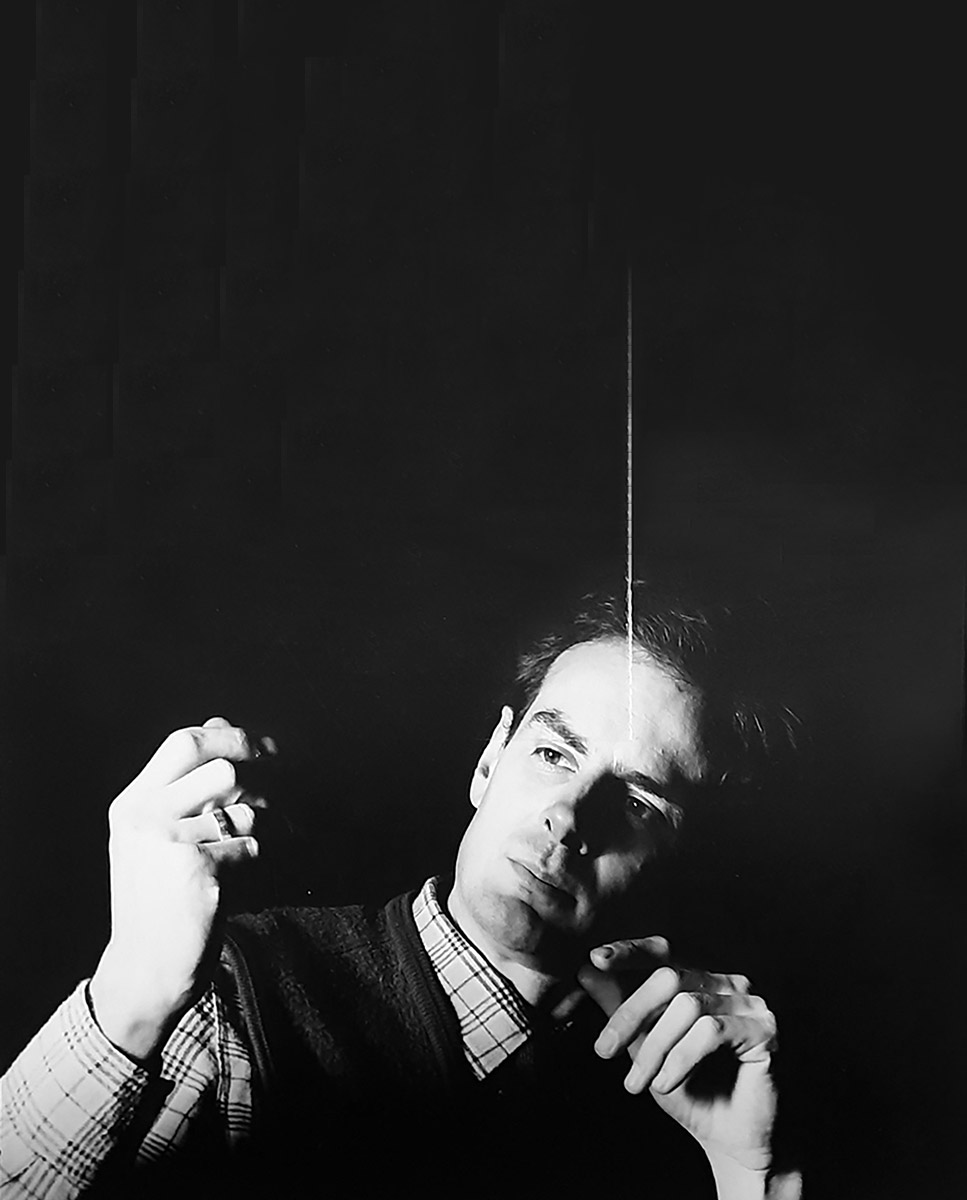
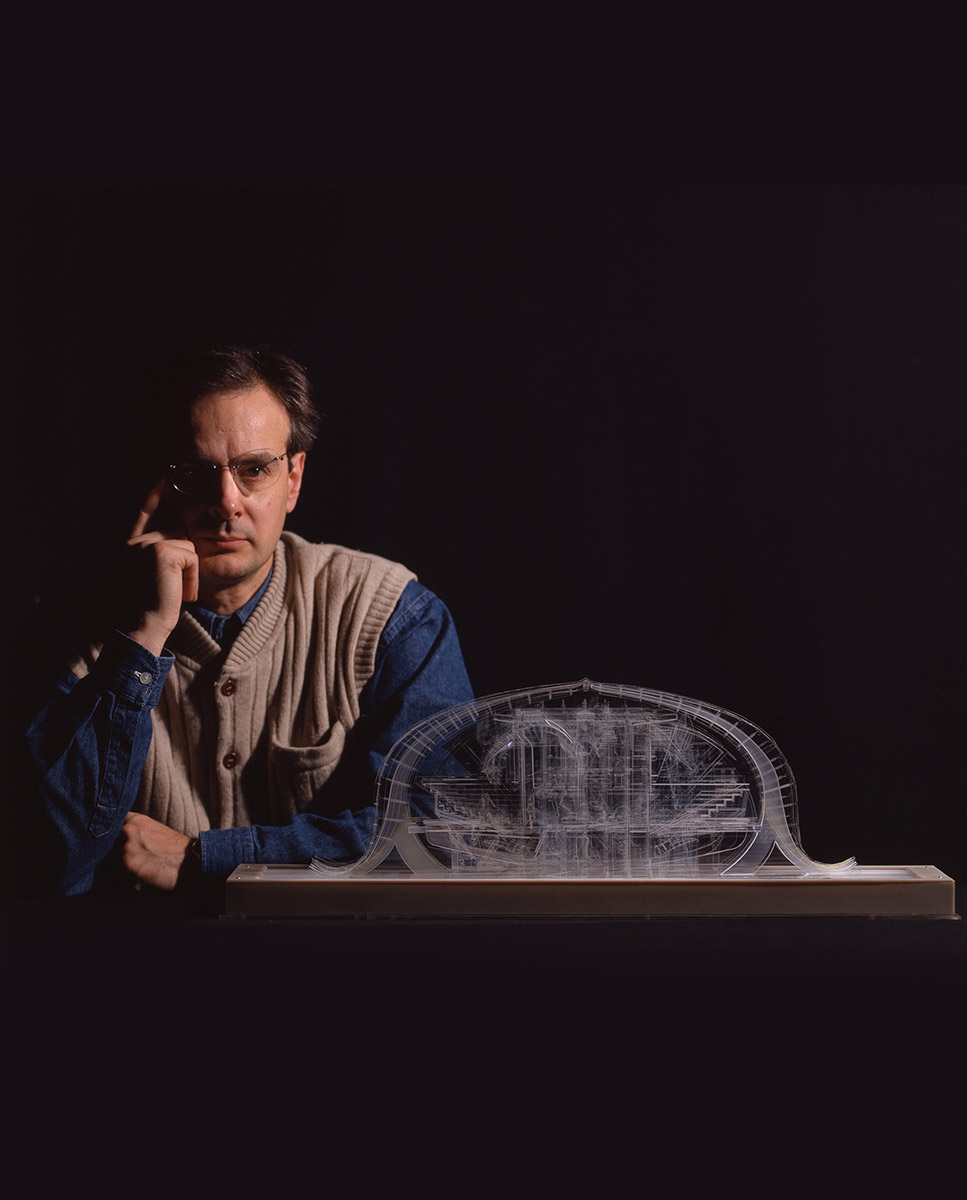
Facial architecture: “olotratti”
Avalle begins to receive commissions.
Fortified by his experience during Atlanta Opus Epicum, he decides to focus on his “olotratti”.
The term, coined by him, refers to a three-dimensional stratigraphic portrait that gives an overall yet changeable facial representation.
He invents a technique that is very evocative, at once “realistic” and dematerialized, as in the “olotratti” of Ezra Pound (commissioned by the publisher Vanni Scheiwiller, who later dedicates a monograph to Avalle in the series “Arte Moderna”), and of Eugenio Montale, whom the artist had the opportunity to spend time with as a child.
Architecture, lighting engineering and design
From companies to galleries and to museums
His interest for architecture deepens and Avalle finds himself ready for his seventh great artwork Technopolis (1987), a ‘company portrait’ for Castek in Milan.
For the CERN in Geneva, he conceives a tensile structure for the ceiling of the Visitor’s Center (1989): alongside his engineering calculations to accomplish this work, the books of Fritjof Capra and Daniele Del Giudice share his desk space. A radiant example of architectural design depicting imaginary figures can be found, a few years later, in the huge panels created for Gaia – Habitat interplanetario, (Gaia – Interplanetary Habitat), also devised as a ceiling exhibition.
In 1994 a new architectural challenge: Avalle undertakes a number of artistic as well as functional projects for the Costa Allegra cruise ship designed by architect Guido Canali. For the ship’s entrance hall, he accomplishes his eighth great artwork: Obelisco solare (Solar obelisk) in plexiglas, with interferential filters and fiber optics.
This paves the way to a flourishing phase of luminous sculptures, first with the employment of LED lights and later photovoltaic cells: as can be seen in works like Rugiada (Dew) which Avalle designs for a boutique in Moscow, where he travels at the onset of the year 2000. His experimentation also manifests in architectural and design projects that utilize more traditional materials as steel and wood, together with plexiglas, for doors, furniture, stairs and lighting fixtures.
During these years his collaboration with various galleries intensifies: for Studio Gastaldelli in Milan, he prepares a series of works that reexamine the style of gothic architecture, whereas Palladio is his inspiration for another group of pieces that go on exhibit at the Studio Amedeo Porro in Vicenza, while the gallerist Mario Valente of Finale Ligure dedicates a solo exhibition to him with a vast catalog and will go on to show his work at the art fairs in Cologne and Frankfurt, and later in Milan and Bologna.
Thanks to Fernando Gianesini’s mediation, a collaboration begins with the Italian bank Credito Valtellinese that allows, among other accomplishments, for a ten-year exhibition of Incendio a Beaubourg (Fire at Beaubourg) in the refectory of the Palazzo delle Stelline in Milan.
In the meantime, in 1993, Volker Feierabend purchases for his V.A.F. Foundation Avalle’s three great artworks Opera Labirinto (Labyrinth Artwork), Helma Opera Labirinto (Helma Labyrinth Artwork) and Atlanta Opus Epicum in view of a museum placement, as is then the case with the exhibitions in Bonn, Karlsruhe and Rovereto. During these years Avalle also displays his work for the first time in Holland: of particular interest the exhibition with colleague and friend Jurrien Strelitski at the ESTEC – European Space and Technology Centre.
Avalle participates in one of the last World Expos of the millennium with a sculpture in Lisbon, in the global exhibition dedicated to “The future of oceans”.
Year Zero
Reflections on the contemporary world, including the new generations
Avalle would have never imagined that at the dawn of turning fifty, he would have started to teach, overcoming his initial reluctance, due to his respect for a vocation that, in his opinion, also requires a matured experience in a “bottega-workshop”.
Thus, for almost twenty years, parallel to his artistic activity, Avalle fulfills with passion his role of Professor at NABA (Nuova Accademia di belle Arti) in Milan, where in the workshop of the School of Design he teaches Techniques, Materials and Instruments. An experience that combines teaching, experimentation and planning, recreating the atmosphere of an authentic “bottega”, where his students have the opportunity to present their own work in various exhibition spaces and also to collaborate on his projects.
Certain modern day events and calamities triggered by imbalances in the planet leave a lasting impression: Avalle conceives a series of works inspired by the September 11th tragedy that are displayed in an exhibition at Villa Erba in Cernobbio (near Como), but hope does not dwindle as can also be perceived in the work Fiat lux, installed on loan at the MAP (Museo di Arte Plastica) in Castiglione Olona (Varese), where, in the Seventies, he had first discovered the potentiality of plexiglas.
The ninth great artwork comes into being: Via Crucis, conceived for the new Church of Montegrosso d’Asti. Here the holy motifs of the fourteen stations of the cross are woven together with dramatic themes of our times. A thorough publication of this artwork is presented during the church’s inauguration held by the bishop of Asti and the archbishop of Turin in a public ceremony.
Meanwhile, Avalle finalizes his tenth great artwork, Sintesi (Synthesis), a four-year effort, that goes on display at the art fairs in Bologna and Milan (2006), and later at the Studio Lattuada in Milan, during a solo exhibition presented by Philippe Daverio.
Commissioned by Credito Valtellinese, Avalle completes his eleventh great artwork, Ultima Cena (Last Supper), that testifies the cohabitation of different ethnicities and faiths.
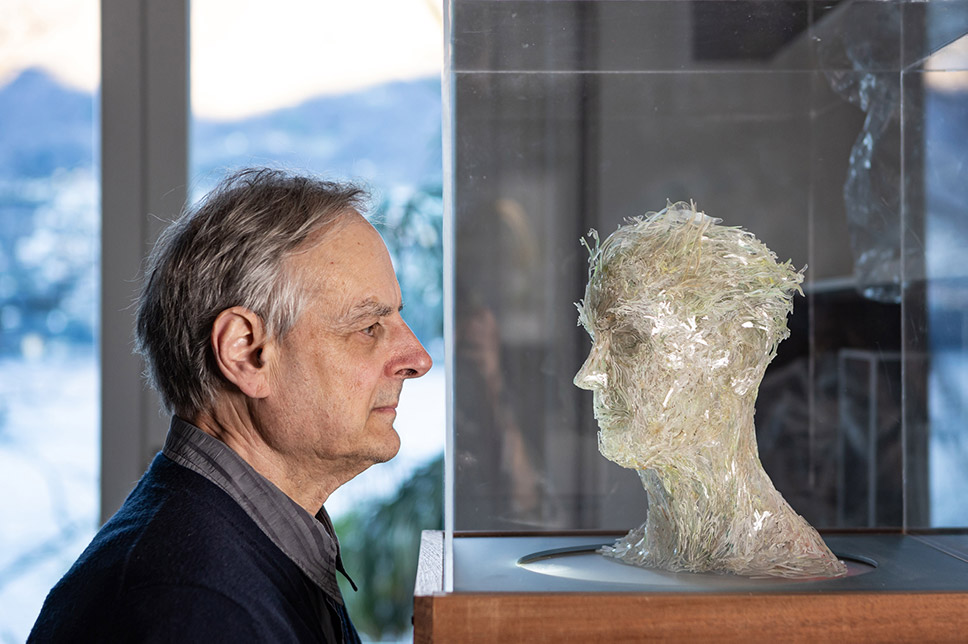
Renovation works for the House Museum
Opening 2022
In 2020 renovation works begin in the Atelier, a part of which is allocated for the creation of a small museum, spanning from the Sixties to today.
Hence the underlying idea of an “Opera Unica” (All One Artwork) can be brought to light, as first conceived in 1975 with the “opere labirinto” (labyrinth artworks).
The inauguration is planned for spring 2022: visitors will be invited to find their own Ariadne’s thread for this itinerary. That doesn’t end here.
“The story of the Hedgehog Man” has begun…
Over the last ten years, Avalle has been working on a series of sculptures preceded by drawings inspired on the theme “The story of the Hedgehog Man – in homage to Anna Politkovskaja”, for the project of a “mythopoetic theatre” with the collaboration of the director Maurizio Maravigna.
The pieces are accompanied by a large colored drawing and the draft of a “miniated manuscript” (still in progress) composed of 400 panels containing a dramaturgical text with illustrations, drawings, photographs, and video footage of the “staged” sculptures.

